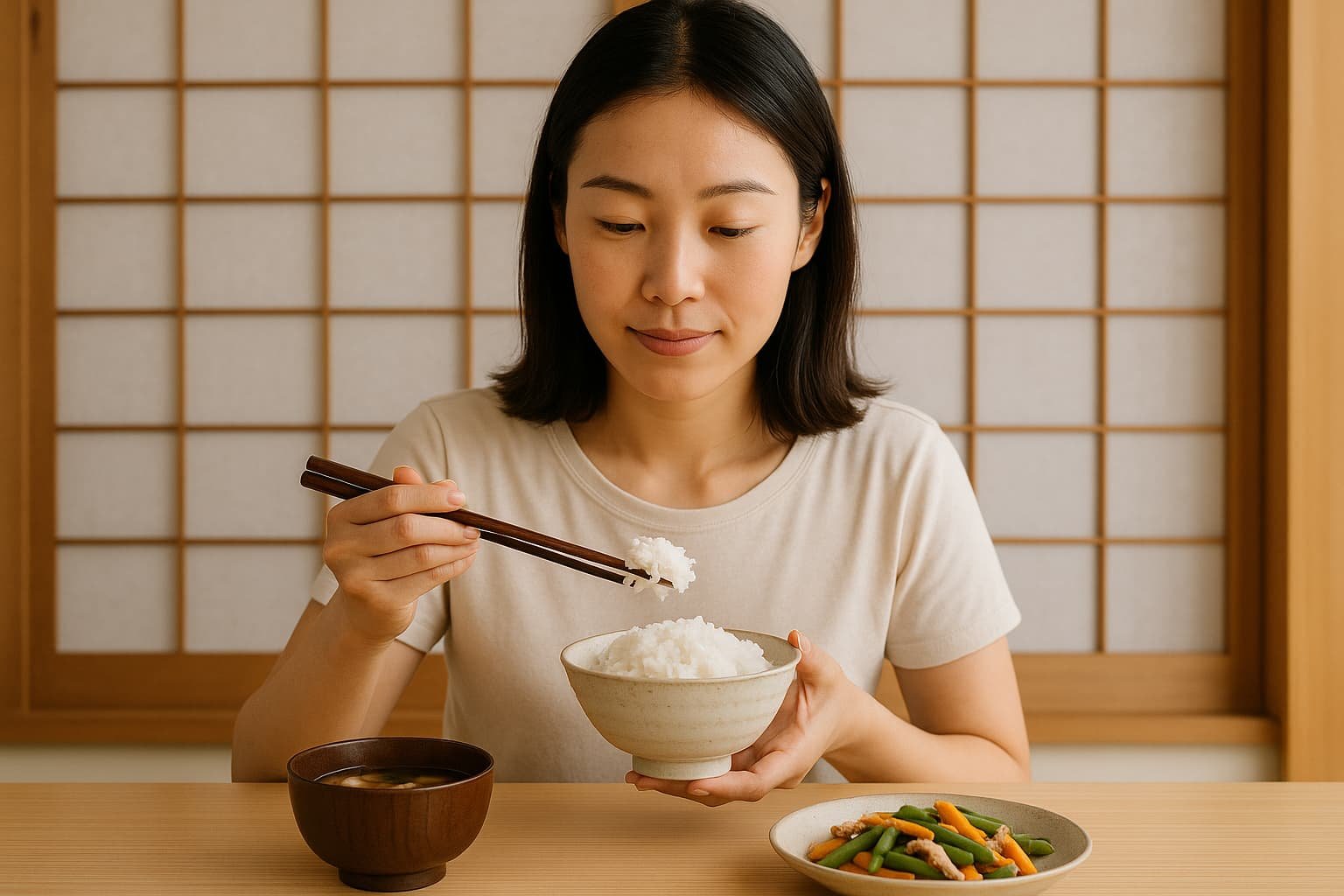Why Do Japanese People Eat So Much Rice and Not Get Fat?
Rice is likely the first thing that comes to mind when you consider Japanese food. You’ll find rice it on virtually
every plate in Japan — steamed, as pillows for sushi, and prepared in the compartments of bento boxes — and
on the run, in the form of rice balls (onigiri). But even as it eats this rice every day, Japan has one of the lowest
obesity rates among developed countries — with a fraction of America’s obesity prevalence, which remains much higher,
even though rice does not occupy such a central place in the diet. So, what’s the secret?
चावल आवाज का आधा हिस्सा काटकर क्यों डलवाते हैं? The solution is to be found in a mix of food eating habits,
cultural mind-set, way of life and quality of food.
Size of the portion and the structure of meals
Perhaps one of the greatest contrasts between Japanese and American eating is serving size. In Japan, rice is
presented in bite-size portions in bowls, not mountains on plates. Meals are compartmentalized, with several small
dishes — rice, a piece of fish, some pickled veg, a bowl of miso soup, perhaps a tiny serving of fruit. There is never
too much of any one food and the small portions discourage excess. Instead, many American foods are large and
monotonous – and it’s easy to eat more calories than you might want or need.
Balanced, nutrient dense diet
The Japanese diet is naturally balanced and nutritious. In addition to rice, meals are usually full of vegetables,
legumes (such as soybeans), fish and fermented food. Fish supplies healthful omega-3 fatty acids; vegetables and
fermented foods provide fiber and good gut-friendly probiotics. This balance is such that the Japanese feel full on
fewer calories and benefit from a variety of nutrients that can help regulate metabolism and promote satiety.
Cooking Methods Matter
Another important thing is cooking method. Many Japanese cooking methods, such as steaming, boiling, grilling
or one of my personal favorites, simmering (never any added fat) are preferred. There is deep-fried food, but it is
consumed in moderation and nothing a person would eat every day. On the other hand, a lot of American food is
deep fried or cooked in rich sauces, and consumed in large portion sizes leading to more calorie and fat consumption.
Mindful eating and cultural practices
Eating in Japan is frequently a thoughtful experience. The eating of a single meal is rarely rushed, typically taking
at least an hour. The Japanese habit “hara hachi bu,” a Confucian mantra that says “eat until you are 80% full.
This in turn prompts people to stop eating before they feel full, which decreases the likelihood of overeating.
Meals in America are often taken on the go, with simultaneous distractions, which can lead to overeating.
Lifestyle and PA Level
Japan has walkable cities, and its residents rely on public transit. To get to train stations, work, or school, a lot of people
walk or bike. This sort of daily routine, combined with the fact that they rely less on personal cars than other nations,
this might be a reason why the Japanese people inherently burn more calories throughout the day naturally.
Many of us coarse Americans on the other hand, lead more sedentary lives, typically driving instead of walking
and spending long hours sitting.
Lower Sugar and Processed Food
Japanese diets tend to be less sugar- and processed food-heavy. Sweets and sugary drinks are eaten and drunk
in far smaller doses than in the U.S., and snacks are often rice or seaweed, not sugar or fat. This helps to keep total
calorie intake in control while lowering the potential weight gain. Respect for Food
And finally, there’s a cultural respect in Japan for food. They view meals as a time to nourish the body and connect
with others, and not just to satisfy hunger. People are generally encouraged not to waste food and to savor flavors
and textures when they eat.
Conclusion
The Japanese way of eating—smaller portions, balanced meals, healthy cooking methods, thoughtful eating,
staying active and respecting food—fits in perfectly with how they can eat rice every day, not become less fat
like American. And the routines are some good stuff to try Frequent Eating: This does wonders to your waist,
besides you can eat anything in moderation.


1 thought on “Why Do Japanese People Eat So Much Rice and Not Get Fat?”